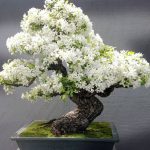 From my experience all kinds of plants we hold in the house, on the balcony or we meet in our roads through the woods or mountains can hide less pleasant surprises, such as various poisons.
From my experience all kinds of plants we hold in the house, on the balcony or we meet in our roads through the woods or mountains can hide less pleasant surprises, such as various poisons.
I am talking in general about the substances that may cause health inconveniences, stomach pain, vomiting, dizziness, irregular heart beats, or even death.
There are so many plants that a regular person like me may or may not suspect to be powerful enough to hurt, and I must say before I looked in the matter carefully I was totally unaware of their damaging capabilities.
Well if we think about it, each of us has a spot of poisonous plants in our house. They don’t necessarily have to be hemlock, like in “Hamletâ€, but simply a leaf of Dieffenbachia or oleander can play tricks.
These are some of the plants that I found on my own experience to damage the health.
Autumn crocus has mauve flowers and is so attractive. But the whole plant, especially bulbs and seeds, contains an alkaloid called colchicines used in the treatment of skin cancer, gout, arthritis and other diseases.
If used incorrectly or if it comes in contact with the body, it can attack organs and tissues, paralyze the central nervous system and stop the breathing, causing death by suffocation. The plants toxicity does not disappear, even after cutting it. Even the mere collection of the flowers can cause num fingers and body stiffness.
I saw this at work on the unfortunate occasion when my little niece was brought into E.R with no feeling in her little hands after picking the beautiful flowers from a neighbor’s garden.
 The Hellebore plant is also called lunatics herb and appears at the beginning of March.
The Hellebore plant is also called lunatics herb and appears at the beginning of March.
The flowers appear when temperatures are still quite low and thus hellebore is the first type of flowers which can be picked.
Hellebore is very toxic, due to strong alkaloids with the same name.
The contact with the plant juice, especially fresh roots can cause dizziness, vomiting, cramps, or faint. Cattle do not graze hellebore, and they know better than most people.
I remember how sick I was many years ago when going to the country in the early spring I had to pick flowers from my garden and among those flowers was also the hellebore.
The aconite is from the same family as the hellebore and represents a competition in toxicity. Long ago used for killing wolves it has beautiful flowers which attract the tourist and tempt him to pick them.
The roots contain aconitum a very strong type of alkaloids and coming in contact with them results in headaches, nausea, vomiting and tingling in fingers, hearing and vision loss, dizziness and slow heart rate. The aconite spreads its seeds by autumn wind and can appear in any garden.
I saw these symptoms of aconite poisoning on my own son while he was so eager to bring me the first spring flowers from the garden. His sweet gesture led to an urgent visit to the doctor’s.
All of us were kids and at some point lived the enthusiasm of picking wild flowers for our dear ones never knowing at what danger we may expose ourselves.
Growing up as proud owners of a house garden we should be aware of the danger hiding in the wild herbs growing among our flowers.
I bought a book about poisonous plants and I keep it at hand. I must admit I am glad I chose to be safe rather than sorry because every spring a new addition of wild plants makes its way inside my garden.







Comments are closed.